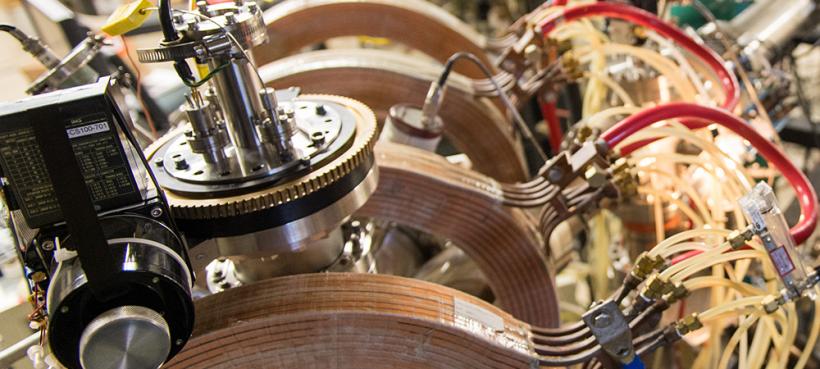
The plasma inside of a fusion power plant is never perfectly confined – some of it interacts with the walls, modifying both the plasma and the wall materials. The interactions between the hot plasma and the plasma-facing wall can lead to several detrimental effects. Examples: (1) exposing a material wall to an energetic plasma can erode material from the wall and shorten the life of the plant; (2) the plasma fuel can be implanted and trapped in the walls, thereby removing it from the fusion fuel cycle; (3) the neutrons produced by the fusion reaction can change the wall materials’ thermal and mechanical properties; (4) exposure to certain plasma conditions can even lead to the growth and evolution of complex nano-scale surface structures. Additionally, the choice of wall material strongly impacts plasma performance since material eroded or ejected from the wall will enter the plasma as an impurity and have a detrimental cooling effect on the plasma. Understanding the physics behind these complex plasma-wall interactions is important so that we can minimize, mitigate, or avoid these detrimental effects in a commercially viable fusion power plant.
Plasma-material interactions are studied at the PSFC on dedicated experiments at the CSTAR ion accelerator facility and on the Alcator C-Mod tokamak. At CSTAR, ion accelerators use high-energy ions to diagnose materials and measure changing characteristics as a result of plasma exposure. The high-energy ions can also be used to simulate the neutron damage expected from a fusion reactor environment. The Alcator C-Mod tokamak exposes metallic tungsten and molybdenum wall materials to reactor-like conditions, diagnosing changes in the wall and in the plasma and developing mitigation strategies. Experience on Alcator C-Mod makes the team at MIT world leaders in operating tokamaks with fully metallic walls and understanding the corresponding plasma-material interactions in that environment.
Graham Wright
wright@psfc.mit.edu